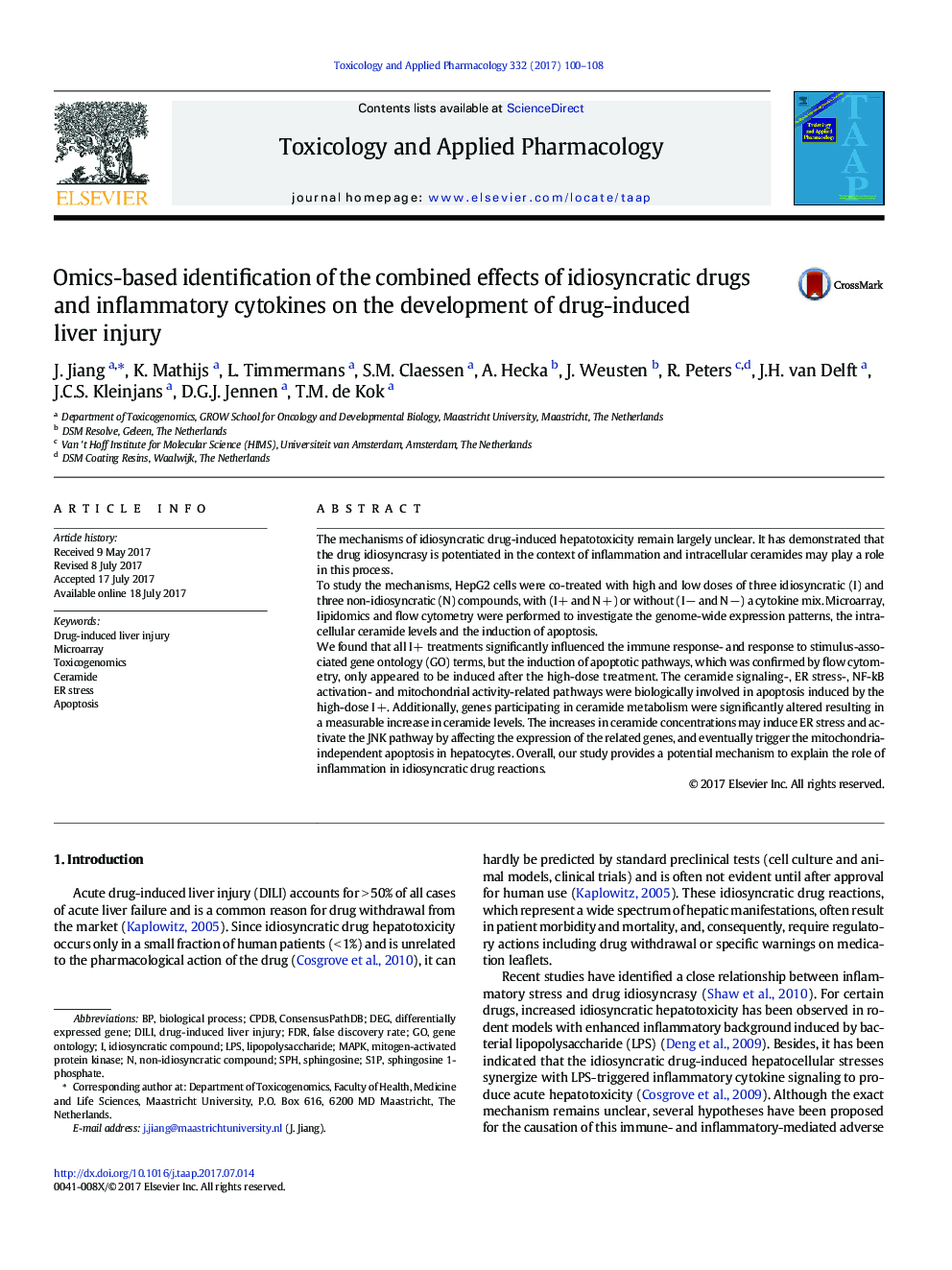| Article ID | Journal | Published Year | Pages | File Type |
|---|---|---|---|---|
| 5558396 | Toxicology and Applied Pharmacology | 2017 | 9 Pages |
â¢The exposure to I + results in the highest ceramide formations and cell apoptosis.â¢The high-dose I + elevates ceramide levels by altering the related gene expressions.â¢The excess ceramides trigger hepatocyte apoptosis via ER stress and JNK pathway.
The mechanisms of idiosyncratic drug-induced hepatotoxicity remain largely unclear. It has demonstrated that the drug idiosyncrasy is potentiated in the context of inflammation and intracellular ceramides may play a role in this process.To study the mechanisms, HepG2 cells were co-treated with high and low doses of three idiosyncratic (I) and three non-idiosyncratic (N) compounds, with (IÂ + and NÂ +) or without (IÂ â and NÂ â) a cytokine mix. Microarray, lipidomics and flow cytometry were performed to investigate the genome-wide expression patterns, the intracellular ceramide levels and the induction of apoptosis.We found that all IÂ + treatments significantly influenced the immune response- and response to stimulus-associated gene ontology (GO) terms, but the induction of apoptotic pathways, which was confirmed by flow cytometry, only appeared to be induced after the high-dose treatment. The ceramide signaling-, ER stress-, NF-kB activation- and mitochondrial activity-related pathways were biologically involved in apoptosis induced by the high-dose IÂ +. Additionally, genes participating in ceramide metabolism were significantly altered resulting in a measurable increase in ceramide levels. The increases in ceramide concentrations may induce ER stress and activate the JNK pathway by affecting the expression of the related genes, and eventually trigger the mitochondria-independent apoptosis in hepatocytes. Overall, our study provides a potential mechanism to explain the role of inflammation in idiosyncratic drug reactions.
